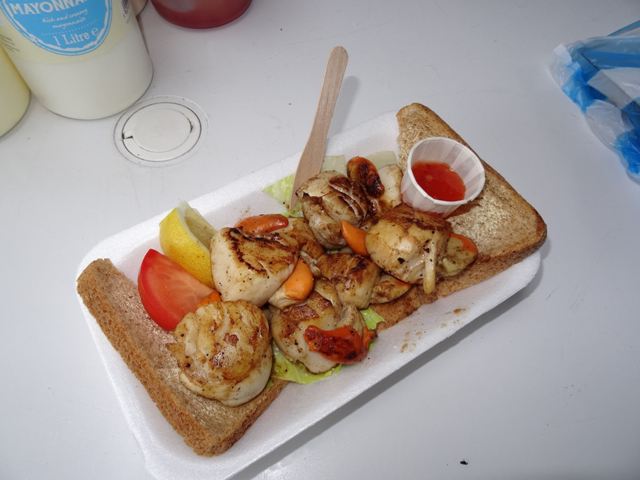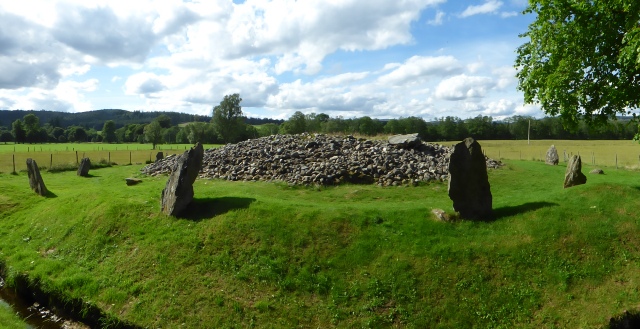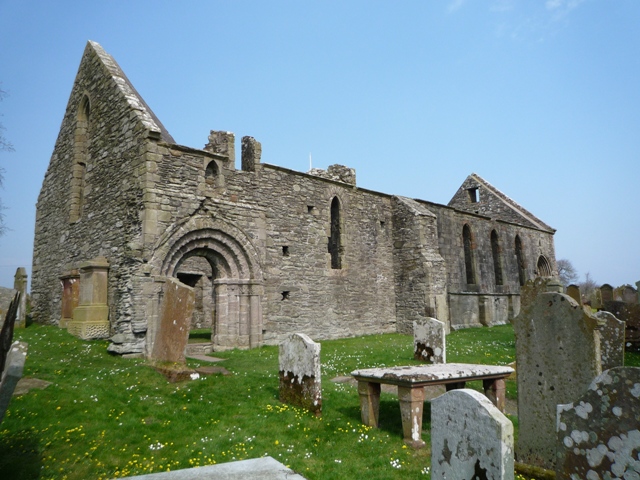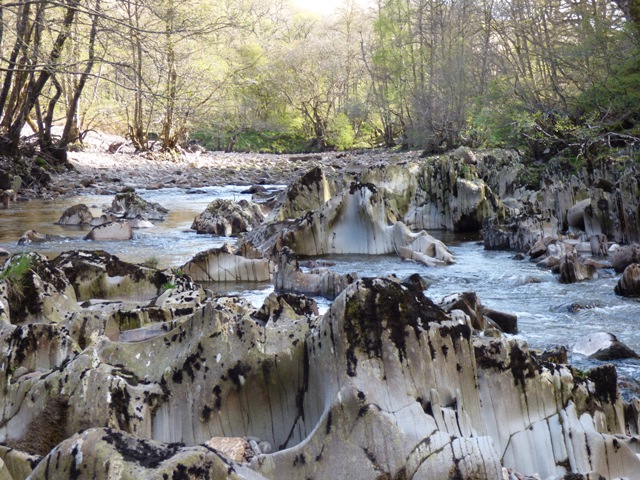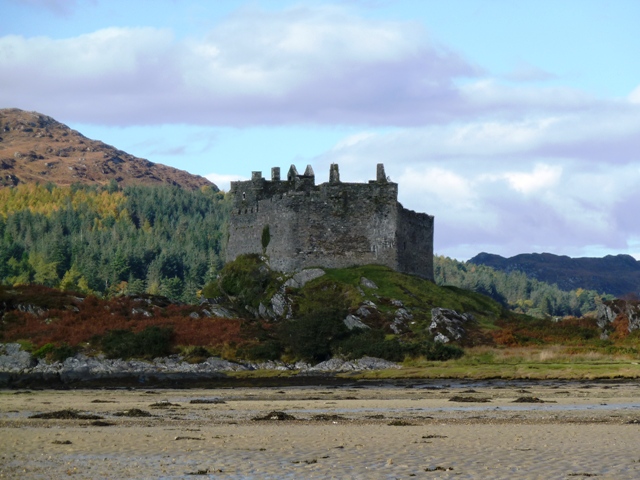Scotland Travel Blog September 2016
"Escaping the Crowds"
Whilst touring in the Inverness area on a lovely sunny day, I stopped off at Corrimony Cairns to get some better pictures for our photo library. Despite nearby Loch Ness and Inverness jumping with the usual crowds of summer visitors, I arrived at the cairns and found that I had the pace all to myself which was ideal as it meant nobody was wandering around in the background of my shots and I could set up the tripod without worrying about being in the way of someone else. Corrimony cairn is a very well preserved Neolithic chambered tomb of a design that is known as a "passage grave". This type of burial cairn is found in several other places around Inverness and the most notable of these is Clava Cairns, but the big diffrence between Corrimony and Clava is the number of visitors that each attracts. Whilst Corrimony can be a site of perfect isolation even in the middle of summer, Clava cairns is now one of the sites that is firmly on the to do list of most "Outlander" fans and it can get mobbed.
Of course, Clava Cairns isn't the only place in Scotland that gets busy with tourist crowds. And this got me thinking about other places which attract the crowds although there are alternative sites that deliver much of the same experience without being such mainstream tourist destinations.
Loch Ness is at the top of a lot of visitors "Must see" lists, but there are other lochs in Scotland with monster legends. Nearby Loch Lochy has had some sightings, but no one has produced a picture yet and I suspect the monster sightings here are largely a scheme by a local hotel owner who wants to boost business. Loch Morar has a much longer recorded history of monster sightings and it is conceivable that it holds some big beasties as it is the deepest inland water in western Europe. In 1948 a bota load of tourists reported "Something unknown" in the loch, but the sighting that got most attention was made by 2 local fishermen in 1969. They claimed that there boat was bumped and almost capsized by a large creature some 25 to 30 feet in length. This sighting led to the establishment of the Loch Morar Survey in 1970 and they conducted hydrophone and underwater camera searches, but the 310 metre deep loch Morar didn't give up its secrets.
This August we were back on Iona and must admit that we were quite surprised at just how popular this island was on a day that wasn't the best weatherwise. Iona is a special place, but it isn't the only place with strong historical links to the beginnings of Christianity in Scotland. The village of Whithorn, located in Wigtownshire, has a longer history as the "cradle of Christianity" in Scotland and it is claimed to have been the site of the first Christian church in Scotland. Archaeological evidence indicates a Christian settlment here from as early as 450AD and that would mean it was established before St Columba set up his mission on Iona. The 5th century church has now gone along with the shrine of St Ninian which was once a major site of pilgrimage and even King Robert the Bruce is recorded as visiting the shrine just before his death in 1329.
In recent years the Fairy Pools on Skye have been featured in several travel guides and top ten lists of things to do in Scotland. Unfortunately, all this publicity has turned a once pleasant and quiet side road route through Glen Brittle into a heavily congested single track road. The car park for the Fairy Pools is not large enough to handle the number of visitors and we've even heard reports of people getting into fights over parking spaces. The underwater arches at the Fairy Pools are beautiful and it is still quite a unique place to visit, but we feel that the crowds have reached the level where they detract from the pleasure of the place. Our suggestion for a riverside picnic spot with unusual rock formations and a very good chance of being alone would be the Monessie Gorge just east of Roybridge in Glen Spean. You would have to be quite bold to go wild swimming in Monessie Gorge and it certainly isn't as easy to take a dip here due to the steep sides of the gorge, but the river just upstream from the gorge is a lovely spot for a picnic and a paddle. The bedrock beside Monessie falls has been "pock marked" by the erosive action of boulders tumbling around inside hollows. This in turn has created river bank stone formations that look a like ice melting into the water. It's not as famous as the Fairy Pools, but equally scenic in its own way.
Eilean Donan castle has appeared on so many holiday brochures, calendars, postcards and films that it has become one of the most iconic images of Scotland. It is is undeniably a strikingly beautiful castle with a stunning location on a small island at the entrance to Loch Duich. What you might not realise is that the Eilean Donan castle that you see today is largely a reconstruction that was completed in 1932. If you look carefully at the stone work, you can discern where the old and new masonry meet. And the distinctive causeway that leads out to the island is a 1930's addition too. Understandably, lots of people want to visit this famous castle and this means that Eilean Donan car park is a busy place. If you want to find a more "authentic" castle on a small island in a very scenic location, we would suggest that you head to Castle Tioram on the shores of Loch Moidart. Castle Tioram is very much a ruin and you can't get inside due to the danger of falling masonry, but it is still quite complete and the outer walls are almost intact. Whilst Eilean Donan was battered for 3 days by the Royal Navy and then blown up with its own arsenal of gunpowder, Castle Tioram had a less violent end. It was torched by its owner, Allan of Claranald, who didn't want it to fall into the hands of the opportunistic Clan Campbell whilst he was away fighting in the 1715 Jacobite uprising. Castle Tioram is well away from the mainstream tourist trail so you don't need to worry about your visit coinciding with the arrival of a coach party.
If there is one restaurant in Scotland which has achieved global fame it would be the Three Chimneys on Skye. Getting a table for dinner at the Three Chimneys is not something that you do on the night and in the peak summer months you may have to book several weeks in advance to get the time that you want. In our opinion, you really don't need to go the Three C's to get a memorable culinary experience of Scotland. The up and coming place that we reckon you need to keep an eye on is the "Inver Restaurant" on the east shore of Loch Fyne and a few miles south of Strachur. But you don't need to spend a lot of money to get a great meal in Scotland. Some of the best tasting food that you find is the simple stuff that is served in humble surroundings as close to its source as possible. The sort of places that we are thinking of are the Oyster Shed at Carbost on Skye, the Loch Leven Seafood cafe near North Ballachulish or any of the smokehouses around Arbroath that sell the local "Smokies".
